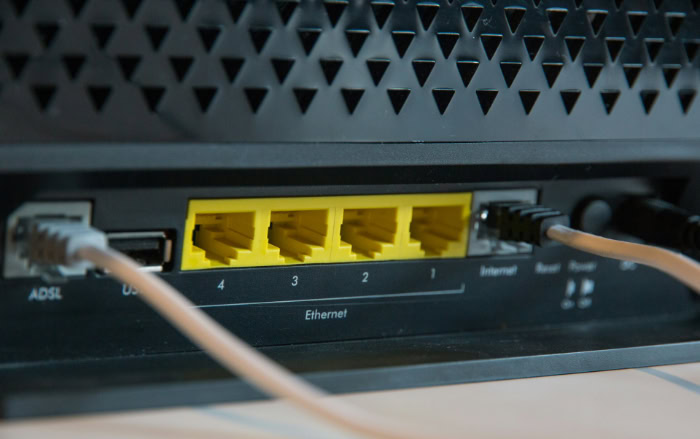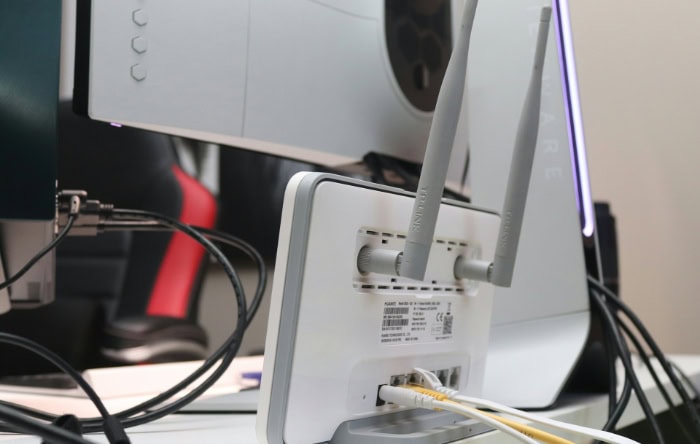How to Port Forward on Your Router: Simple Guide

Opening up your home network to allow external devices or friends to connect can sound both exciting and intimidating. Whether you want to host a game server, access a home security camera from your phone, or ensure smooth online play, port forwarding is a practical skill that makes this possible.
Mastering port forwarding not only optimizes your connectivity but also empowers you to control what happens on your network. However, it is essential to balance access with proper security measures to protect your data and privacy.
Core Concepts & Fundamentals
Port forwarding is a method that directs incoming internet traffic to a specific device or service within your private network. For example, if you want friends to join your game server or need remote access to a home computer, port forwarding makes that possible by creating a direct path through your router’s firewall.
This stands in contrast to port triggering, which temporarily opens ports only when a specific outbound connection is detected. Port forwarding is constant and manual, while port triggering opens ports only as needed and closes them afterward.
By forwarding the right ports, you bypass general firewall restrictions and allow certain services to be accessible from outside your network.
Protocol Selection
Choosing the correct protocol is essential for effective port forwarding. Most router settings allow you to specify either TCP, UDP, or both.
TCP, or Transmission Control Protocol, offers reliable communication by verifying that data packets reach their destination and resending them if necessary. Applications that require accurate delivery, like web servers or file sharing, typically use TCP.
UDP, or User Datagram Protocol, is preferred in cases where speed matters more than perfect accuracy. Online gaming, streaming, or voice applications often rely on UDP.
Since UDP sends packets without checking for errors or order, it is faster but can lose some information along the way. Deciding which protocol to use depends on the needs of the service you plan to access.
Basic Security Principles
Opening ports has advantages but also presents risks. Any exposed port could potentially serve as a gateway for unwanted visitors or malicious activity.
Limiting port forwarding to only what is necessary is one of the simplest ways to reduce exposure. Whenever possible, use strong, unique passwords for devices and services that are accessible from outside your network.
Enabling built-in firewall rules that restrict which external IP addresses can access forwarded ports will provide another layer of protection. Regularly checking your router for firmware updates helps close newly discovered security holes.
By practicing these habits, you ensure that the rewards of port forwarding do not compromise the safety of your home network.
Pre-Configuration Steps

Getting set up for port forwarding is much easier with a few preparations. Taking time to organize your network settings, secure access to your router, and review existing configurations ensures a hassle-free setup.
Each step reduces the risk of errors and helps everything work the way you expect from the start.
Router Access Preparation
To begin, you need to access your router’s administration panel. Most routers are reached by typing an IP address such as 192.168.1.1 or 192.168.0.1 into your web browser’s address bar.
If you are unsure about the address, checking your computer’s network settings or consulting your router’s label usually provides the answer. The login screen appears once you reach the router’s page, often asking for a username and password.
Many routers use default credentials like “admin” for both fields, but using factory credentials presents a security risk. Consider changing the password if you are still using the default settings to prevent unauthorized access later on.
Static IP Assignment
Assigning a static IP address to the device that will use port forwarding ensures that your configured rule always points to the right place. Without a static address, devices can receive a new local IP each time they reconnect, breaking the port forwarding rule and causing frustration.
Most routers have a DHCP reservation feature in the settings, often found under “LAN” or “Advanced” tabs. By linking a specific IP address to your device’s MAC address, you guarantee that the same device is always reachable at the correct address.
Doing so saves time and prevents troubleshooting headaches down the line.
Current Network Assessment
A quick survey of your current network setup helps avoid conflicts and mishaps. Start by looking through the list of connected devices within your router’s interface to see what equipment already belongs to your network.
Next, review any existing port forwarding or virtual server rules. Overlapping rules for the same port or pointing different rules to the same device can lead to confusion and failed connections.
Taking a few moments to see what has already been set up helps everything run smoothly and prevents accidental service interruptions as you configure your new port forwarding rules.
Port Forwarding Setup Process

Configuring port forwarding involves a few clear steps on your router’s interface. Knowing where to find the right settings and understanding what to enter will help you avoid confusion and make the process straightforward.
Each router might use slightly different menus or terms, but the main ideas remain consistent across most devices.
Router Interface Navigation
Start by logging into your router’s management page using a web browser. Once inside, search the menu for sections labeled “Port Forwarding,” “Virtual Server,” or “NAT.”
Some routers place these options under “Advanced Settings” or “Firewall.” The terminology can vary, but you’re essentially looking for a page dedicated to managing rules for redirecting specific ports.
If you encounter trouble locating this section, your router’s user manual or the manufacturer’s website usually offers guidance tailored to your model. Finding the correct menu sets the stage for entering your port forwarding rules.
Rule Creation
Defining a new rule is the core of port forwarding. Routers usually ask for a service name, which helps you recognize each rule later. You’ll specify the external port (or range) that incoming traffic uses, as well as the internal port that matches the application or service running on your network device.
Many applications use the same external and internal port numbers, while others require mapping to a different port inside. Next, select either TCP, UDP, or both, depending on the application’s needs.
Finally, you enter the local IP address of the device you want to forward traffic to, making sure it matches the static IP you assigned earlier. Accuracy in these fields ensures your port forwarding works as intended.
Protocol and Port Selection
Selecting the correct protocol and port makes the difference between a functioning service and a frustrating connection failure. Each application typically publishes its port requirements, such as port 80 for HTTP web servers, port 3389 for Remote Desktop, or specific ranges for gaming platforms.
Double-check the documentation for your software or hardware to get these numbers right. Matching the protocol, whether TCP, UDP, or both, to the needs of the application prevents issues like dropped connections or slow performance.
Taking a few extra moments to verify your choices often leads to a much smoother experience.
Configuration Validation
Once all fields are entered, save your changes. Some routers require a reboot to activate new rules, while others apply updates instantly.
It’s important to test each new port forwarding rule to confirm traffic is passing through as expected. You can try accessing the forwarded service from an external network or use online tools designed to check for open ports, such as port check websites like CanYouSeeMe.org.
Testing every rule after setup helps you catch typos or misunderstandings before they cause problems. After confirming everything works, your devices and services should be properly accessible from the outside, paving the way for smoother remote connections and more responsive online activities.
Application-Specific Configurations

Different devices and services benefit from port forwarding in unique ways. Whether the goal is lag-free gaming, remote work, home automation, or running specialized applications, configuring ports correctly ensures reliability and efficiency for each scenario.
Knowing the common setups for each type of application helps you tailor your configuration for the best results.
Online Gaming
Gamers frequently rely on port forwarding to achieve faster connections and resolve network issues. Many popular gaming platforms, such as Xbox Live, PlayStation Network, and Steam, require specific ports to be open for matchmaking and communication.
For instance, Steam often uses ports in the 27000-27050 range, while Xbox and PlayStation each have their own recommended lists that help facilitate voice chat and multiplayer features. Optimizing for NAT (Network Address Translation) type is crucial for gamers.
An Open or Type 1 NAT is generally ideal, as it allows the broadest connections and minimizes restrictions. Achieving this usually means correctly opening all the required ports and ensuring there isn’t conflicting double NAT on your network.
Once set up, gaming devices and platforms maintain stable, fast connections with friends and servers worldwide.
Remote Access & Servers
Remote or home-based servers depend on accurate port forwarding to work as intended. Accessing a desktop remotely via protocols like RDP (port 3389), VNC (port 5900), or SSH (port 22) requires corresponding rules so your connection request can reach the target device on your network.
Similarly, self-hosted web servers need ports like 80 for HTTP or 443 for HTTPS to be visible from outside. Always confirm the ports your software uses and double-check that the correct protocol (TCP, UDP, or both) is selected.
It’s also wise to restrict access to specific IPs where possible, especially for remote administrative services, adding another layer of security to your setup.
IoT & Surveillance
Smart home technology and surveillance systems are most useful when you can access them from anywhere. Forwarding HTTP or HTTPS ports for your security cameras, smart thermostats, or lighting hubs ensures smooth operation and rapid access through your phone or computer when you are away.
Many smart devices let you customize access ports in their settings. Updating default usernames and passwords, as well as enabling encryption whenever possible, keeps your devices protected even with the extra convenience of external access.
Custom Applications
Niche software and specialized hardware may use uncommon or user-defined ports outside the standard ranges. Some custom tools or enterprise services need access through higher or less typical port numbers.
Forwarding these non-standard ports helps you unlock extra features or enable connections that generic rules miss. Always note the assigned port within the application and keep a record in your router’s port forwarding section for clarity.
Careful documentation and unique port assignments keep your network organized and running smoothly, even as you expand your range of connected devices and services.
Security & Optimization

Effective port forwarding doesn’t end with opening the right ports. Security and performance should always be part of your network routine.
Keeping an eye on which services are accessible, using the right tools, and handling routine maintenance all work together to make sure convenience never comes at the cost of safety or reliability.
Risk Mitigation Strategies
Minimizing risk while using port forwarding starts with only exposing the services that truly require access from outside your home or business. Every open port creates a potential pathway for unwanted connections.
Carefully consider which applications or devices actually need to be accessible and close any unnecessary ports, removing unused rules whenever possible. Modern routers often allow for firewall rules, where traffic is limited by source IP address.
Restricting access to known, trusted addresses sharply reduces the attack surface. For applications like remote desktop or camera feeds, filtering inbound traffic by country or even specific devices adds a significant security boost.
Each step, no matter how minor, helps keep your network out of harm’s way.
Dynamic DNS Solutions
Maintaining a reliable connection to your home network from afar is difficult when your public IP address changes unpredictably. A Dynamic DNS (DDNS) service solves this by associating your network’s current IP with a consistent, user-friendly domain name.
Instead of manually checking your IP every time, you can connect using a memorable address, and the DDNS service keeps it up to date for you. Many routers offer built-in support for popular DDNS providers, making configuration straightforward.
For anyone needing regular remote access to home servers, cameras, or work files, Dynamic DNS is a valuable tool that removes much of the hassle caused by changing IPs.
Network Monitoring
Staying aware of activity on your forwarded ports is crucial for keeping your network secure. Routers often include basic logs that display successful or failed connection attempts, letting you see if someone is targeting your open ports.
More advanced users benefit from running network scanners or intrusion detection tools to audit and monitor what’s happening in real time. Watching for unexpected activity makes it possible to identify issues early, such as suspicious login attempts or unknown devices trying to connect, and respond before they become serious problems.
Periodic reviews of your router’s logs and running occasional security scans support a healthy, secure network environment.
Firmware & Patching
Maintaining up-to-date router firmware is one of the easiest yet most effective ways to shield your network from threats. Manufacturers regularly identify and fix vulnerabilities, releasing patches that close security holes and improve stability.
Checking for firmware updates directly from your router’s control panel or visiting the manufacturer’s website ensures that your device benefits from these improvements. Scheduling routine firmware updates, just like software updates on a computer, reduces the risks associated with outdated equipment.
In addition to closing old vulnerabilities, updated routers sometimes receive enhanced security features or improved management tools, making maintenance a valuable habit for anyone using port forwarding.
Conclusion
Finding the right balance between easy access and strong security is essential when setting up port forwarding. Taking time to properly configure your router ensures that you can connect to the services and devices you need without leaving unnecessary openings in your network.
Testing each port with online tools like CanYouSeeMe.org can help verify your setup and catch any mistakes early. Assigning static IP addresses to important devices eliminates connection issues down the line, while limiting the number of open ports reduces the risk of misuse.
Port forwarding puts valuable control in your hands, so don’t hesitate to experiment with different configurations. Just remember to keep security top of mind, make changes thoughtfully, and enjoy the benefits of a well-managed network.


